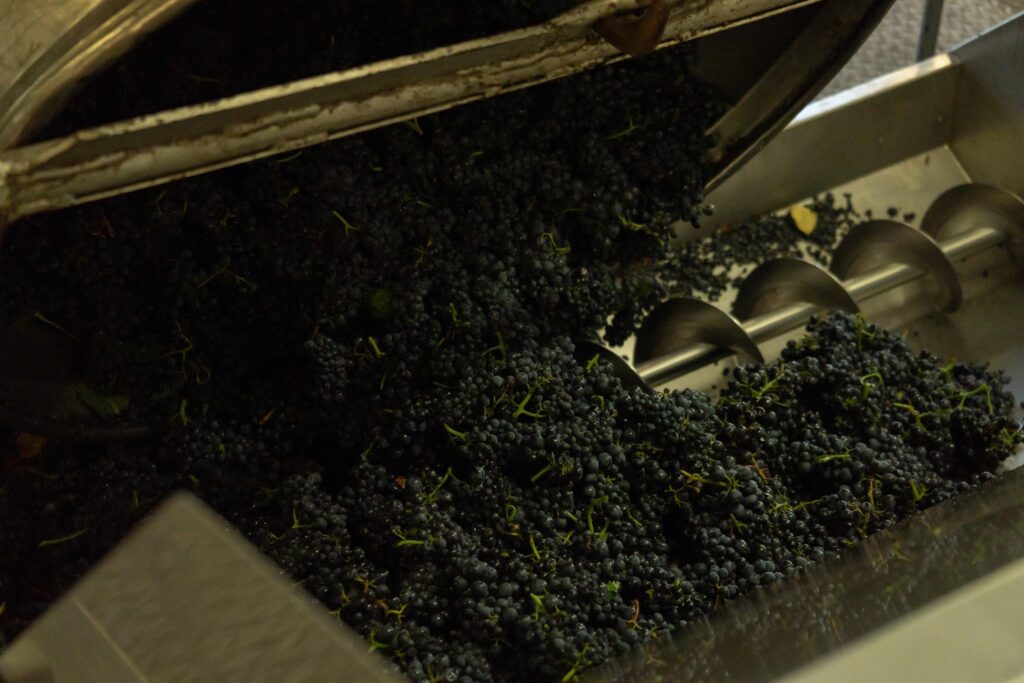Have you ever wondered how red wine is made? Winemaking is an art – a true masterpiece in a bottle. Winemakers bring their passion and dedication to every vintage and wine they create.
When the grapes reach ideal maturity, they are harvested, either mechanically if the vineyard area is suitable for this process or manually, in which it is possible to choose the best bunches to produce the drink.
Find out in detail in this article how is red wine made and understand each of the production stages, such as process, maceration, racking, fining, maturation and aging, bottling and consumption.
One drop of wine is enough to redden a whole glass of water.
― Victor Hugo, The Hunchback of Notre-Dame
You can also watch this and other exclusive GA Originals on YouTube.
Jump To Section
First Steps

The grapes are delivered to the vineyard’s canteen, where they will be separated from the stems and crushed through mechanical presses. The juice resulting from the crush is then transferred to the tank, and the fermentation process begins when yeast is added to the naturally sweet grape juice, which chemically turns the juice into alcohol.
Maceration
As red wine obtains its color, tannins, and complexity from the skins and seeds of the grapes, the juice must remain in contact with these solids during this stage, called maceration. After fermentation is complete in red wines and the desired color and flavors are achieved, the skins, seeds, and pulp are separated from fermented grape juice.
Racking
At the end of the alcoholic fermentation, solid residues, organic matter, and yeast are settled at the tank’s bottom. To prevent undesirable flavors and aromas from being passed on to the wine, the must is transferred to a clean tank in a process called racking.
Fining Process
The wine is sometimes fined and filtered to remove any unwanted particles. Some winemakers skip this step, resulting in cloudier and often more rustic-style wines.
The fining process involves adding animal, vegetable, or mineral protein substances to the wine, retaining and dragging the particles to the bottom of the tank. The most used are casein, bentonite, egg white, vegetable proteins extracted from potatoes and peas, fish gelatin, or Isinglass, a substance obtained from dry fish bladders.
However, the quantities are minimal, around 5-30 ml per 100 liters of wine, not impacting the quality of the final product.
Maturation And Aging

Most wines aged in oak barrels are red wines to develop more complex and balanced flavors and aromas.
Red wine consumed young undergoes maturation in stainless steel tanks to preserve its freshness, aromas, and fruity character.
Bottling
The wine is then transferred to the bottles, where they will age for a few months or many years before being labeled and sold. However, some wines are bottled, labeled, and ready to enjoy.
Did you like this article?
I hope this article has helped you understand how is red wine made. To learn more, take a look at Sauvignon Blanc: The Enthusiast’s Guide To Wine Lovers.
Leave a comment below and share our content.
Help our community grow by following our social media on Spotify, Instagram, Facebook, Youtube, and Tiktok. And stay up to date with the news from the world of Gastronomy.
Don’t forget to tag @gastrovinoacademy on Instagram and hashtag it #gastrovinoacademy.
Cheers 🍷



This blog was… how do I say it? Relevant!! Finally I have found something that helped me.
Many thanks!
I´m glad to hear it from you. Follow our channel on Youtube https://www.youtube.com/@gastrovinoacademy-world
I would like to thank you for the efforts you’ve put in writing this site.
I really hope to check out the same high-grade content from you in the future as
well. In truth, your creative writing abilities has encouraged me
to get my own blog now 😉
I´m glad to hear it from you. Follow our channel on Youtube https://www.youtube.com/@gastrovinoacademy-world
Thanks in support of ѕharing ѕuch a fastidious
ideа, paragraph is fastidiօus, thatѕ why i havе read it entirely